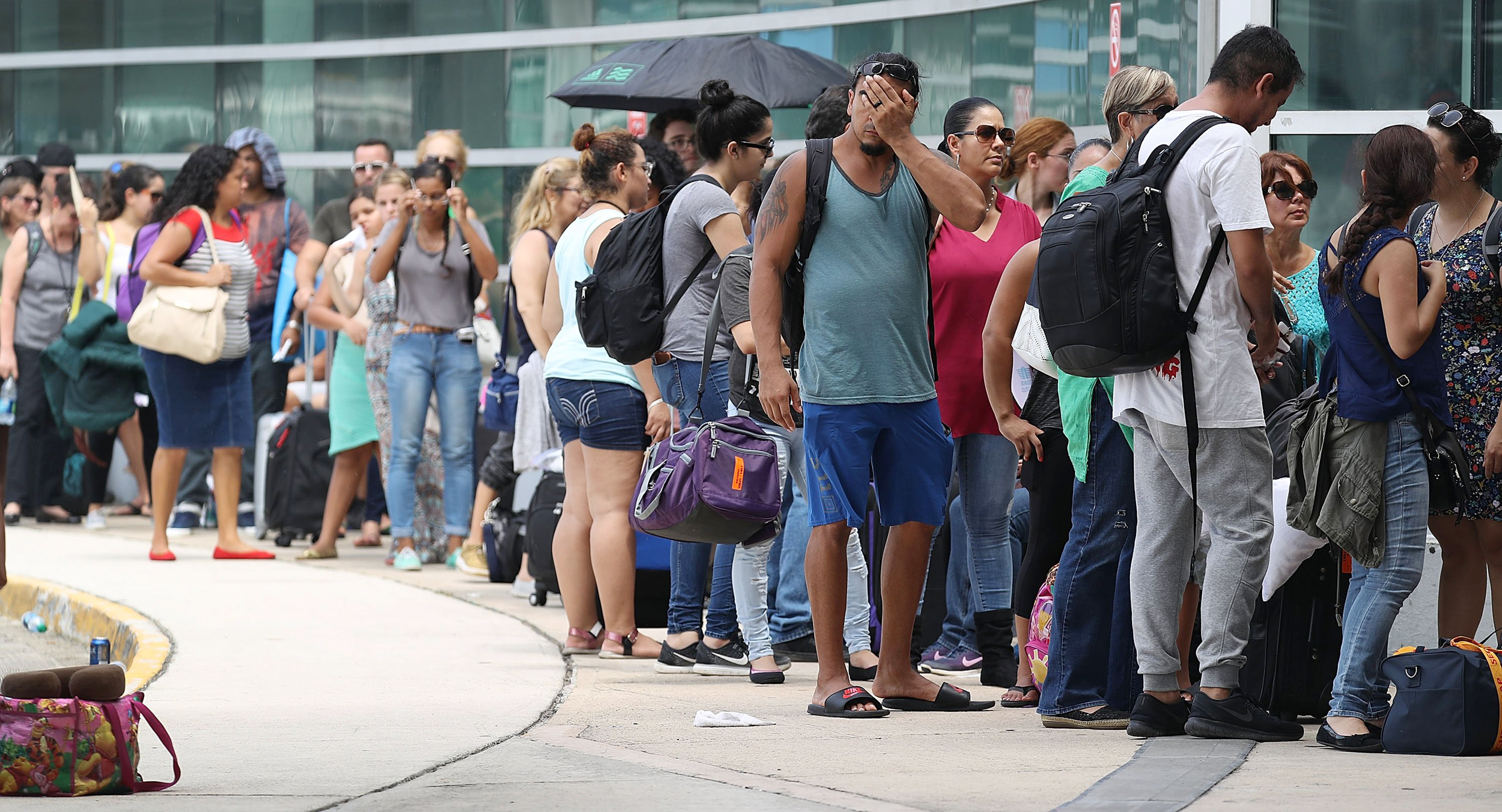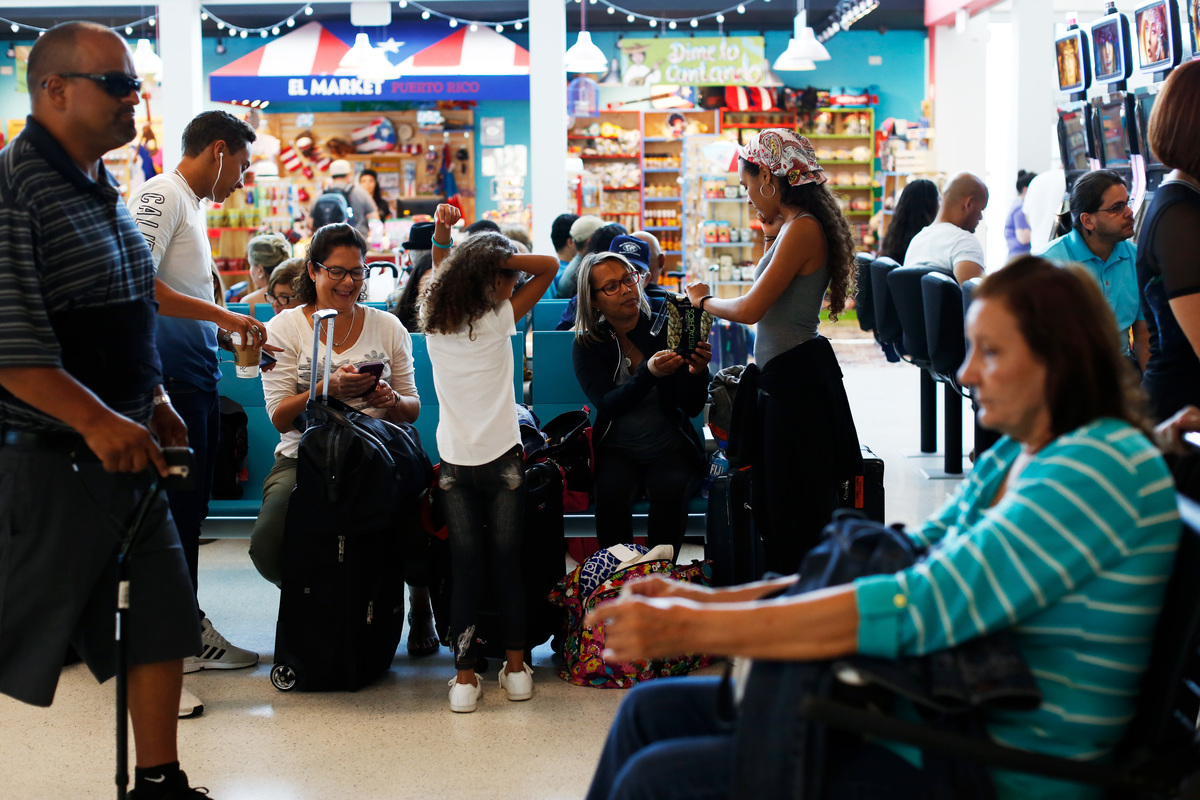
SAN JUAN — On a recent Friday, Jose Alvarez arose before dawn, loaded his three children into his van and drove with his wife two hours from their home in the mountainside community of Adjuntas, Puerto Rico, to the Luis Muñoz Marín International Airport.
His wife and children boarded a plane bound for Lorain, Ohio, where they will live with a relative for at least the next year, so the children can resume their education — as their school has been closed since the hurricane. Alvarez returned alone to Adjuntas, where he will continue to work delivering coffee to restaurants and businesses.
He’ll spend the rest of his time building a new home, stronger than the wood frame house that was destroyed in Hurricane Maria.
The Alvarez family is a snapshot of the hardships confronting the people of Puerto Rico, post-Maria. With no power, no water, no work and no school, should they join the more than 140,000 people who have already left the island? Or should they stay and begin to rebuild?
Each day, more people join the exodus. Estimates are that Puerto Rico could lose more than 10 percent of its population as people flee the hardships of Maria’s aftermath. That would be a tragedy for an island already mired in debt and poverty before the disaster.
What Puerto Rico needs and deserves is a robust recovery effort. Although disasters struck multiple U.S. locales, there is greater need in Puerto Rico. Congress should fully fund the response and promote a locally-led rebuilding effort in a way that addresses future disaster risk.
Even before Hurricane Maria hit, the level of poverty in Puerto Rico was a scandal. Recent Census Bureau data show that more than 45 percent of Puerto Ricans on the island were living below the poverty line — a rate more than double that of our poorest state, Mississippi. In rural areas of Puerto Rico, the poverty rate is above 60 percent.
Today, two months after the hurricane, millions of people in Puerto Rico remain without electricity and running water, and the most vulnerable among them are unable to escape to better circumstances on the mainland. Puerto Rico’s isolation — it’s located more than 1,100 miles from the continental United States — exacerbates its dire need of aid.
We recently returned from a trip to the island, where Lutheran World Relief is responding in the municipality of Adjuntas. We encountered people mourning the loss of their homes and unsure of what comes next. We heard complaints about delays in receiving aid. But we also saw a people with deep pride in their Puerto Rican heritage, some vowing to stay and rebuild, and some conflicted as they consider leaving.
Jose Luis Lopez Torres is one of those weighing his options. He took us through the ruins of the house his grandfather built.
Jose is in his third year studying for a masters in social work degree from a nearby university, and he is wrestling with whether he should stay and help rebuild his community or leave for Tampa or Miami, where he has family and perhaps greater opportunity. “I’m really struggling with this,” he says. “I’m really proud of my homeland. But we don’t have the tools to fix this situation. There isn’t a strategic plan for help arriving where it needs to. It’s spotty and disorganized.”
He says he worries most about people like his grandfather, who at least has family nearby he can turn to. “I’m young, I can take care of myself, he says. “But a lot of the older people are alone, especially in the rural areas. Their children didn’t want to abandon them [when they left the island], but they didn’t have a choice.”
Nearby, Edelmina Batiz Gonzalez lost the roof and back rooms of the house where she lived for more than three decades and raised her children. She’s already made up her mind: She’s not going anywhere; she owns the land and will rebuild.
Her daughters are helping her negotiate the bureaucratic process for applying for federal aid. They’ve spent hours on the phone, setting up user IDs and patiently making their case. And they’ve used the front of their mother’s house to send a message to the world, where they painted in large block letters: “No nos rendimos.”
We will not surrender.

